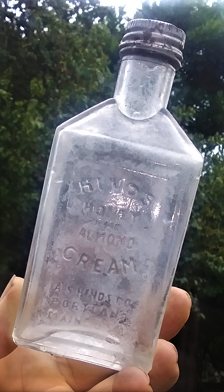Written by the TreasureGuide for the exclusive use of the Treasure Beaches Report.
 |
| View of Grand Tetons From Outside the Jackson Lake Lodge. |
You'll be seeing images like the one above if you watch any business TV this week. Every year the Fed has a symposium at the Jackson Lake Lodge in Jackson Hole, Wyoming, and all of the business programs will be airing interviews with economic leaders with the Tetons in the background. Before I had some of my current responsibilities, I liked to visit the lodge in late August. I highly recommend it if you get the chance. The rooms are not fancy, but it has other qualities that set it apart. First, the lodge with the big windows give a magnificent view of the Grand Tetons. Also, there are nice displays of archaeological objects in the lodge, and there is much to see in the area.
\My favorite dining experiences of all-time were in main dining room at Jackson Lake Lodge. There is a historic mural along one side of the dining room, and large windows showing the Tetons on the other side. The breakfast buffet provides the biggest variety of any meal I've had anywhere. The food is great. Fresh berries, fish, and other amazing items, and they'll give you almost anything you might request.
 |
| View From Jackson Lake Lodge Main Dining Room. |
All meals are great, but the breakfast buffets are unbelievable. You need a healthy breakfast if you are going to spend the day hiking.
 |
| Mural Wall in Dining Room. |
Sometimes they have a pianist in the lobby in the evenings.
Disney made some nature documentaries near there along the Snake River, and you can see the influence of the Jackson Lake Lodge on the lobbies of the DisneyWorld Wilderness Lodge and Animal Kingdom Lodge.
The river raft ride down the Snake River is great too.
If you hike up the hill just outside the lodge you can see glass shards along the path, which of course wouldn't excite most people, but I won't overlook things like that, and much wildlife, including possibly a grizzly bear, coyote or even wolf.
Inside you can view indigenous and other artifacts.
 |
| Notice The Display Case Containing Indigenous Artifacts. |
I know it sounds like a commercial, but it is a great place to visit if you are interested in the outdoors, hiking and history. Do it while you are young. Some of the hikes can get steep and long, but beautiful.
The only downside is that it can take three separate flights to get to Jackson Hole from many Florida airports.
I don't know about this year, but the weather could be getting chilly this time of year in Jackson Hole - especially the nights.
On my last trip there, I remember going out late one night gazing at the stars, which seem especially bright in the cool mountain air, listening to the coyotes, and smiling as I saw a mouse scamper through the automatic doors before they opened, and into the lobby for safety or perhaps to find a warm spot to spend the coming winter.
---
"Ages and stages" is the phrase that comes to my mind today. I've definitely gone through a few and I'm sure you have too. I'm now at the "can't take it with you stage." It comes.
The hobby goes through ages and stages too. Things come and go.
I was just leafing through the premier issue of Teasure Diver Magazine, which was published from 1989 - 1993. Not long. But things changed. Notably the internet.
Anyhow, looking back at the first issue of the magazine, the cover features a scuba diver using a Fisher Aquanaut. Probably not what you would see on the cover of such a magazine today.
On the cover you also see the title of an article, "70 Days to Dive." \The article features Roy Volker working on a 1715 Fleet site with his boat, the Explorer I. Toy is gone, but guys are still working the same areas. While the personalities come and go, the treasure will outlast them all.
Here is one paragraph from that article.
For Roy Volker the number to have played last year was eight. Having had a sparse summer in his search for Spanish treasure, Volker hit it big again in the the eighth month of 1988 and brought up 888 silver coins, as well as several beautiful artifacts from the galleon Nuestra Senor de la Rigas off Sebastian, Florida.
Here we are 34 years later, and not one year has gone by without salvage crews scanning the Treasure Coast wrecks, and the current salvage season is still producing a lot of nice finds, including some great gold items.
As you would expect the premier issue had a lot of good articles. In one, E. Lee Spence wrote about a $50,000 clump that was not initially appreciated for the valuable treasures inside.
Here is that lead paragraph.
As an underwater archaeologist working with treasure hunters, I am frequently amazed at the opportunities overlooked. In order to prevent valuable items from slipping by unnoticed, treasure hunters need to familiarize themselves with all kinds of artifacts and learn to use all of their senses to identify them. They'd also do well to make use of today's modern technology. Such a move could turn otherwise meaningless objects into important discoveries.
Spence went on to describe how he could see the outline of several coins in the clump and then had it s-rayed. The clump he purchased for $5000 turned ot to be worth more like $50,000.
How many times have I talked about the importance of recognizing various types of artifacts? A lot.
Anyhow, looking back 34 years to the first issue of Treasure Diver magazine was interesting.
---
 |
| Source: nhc.noaa.gov. |
The Atlantic is getting more active, as it often does this time of year.
Good hunting,
TreasureGuide@comcast.net





































